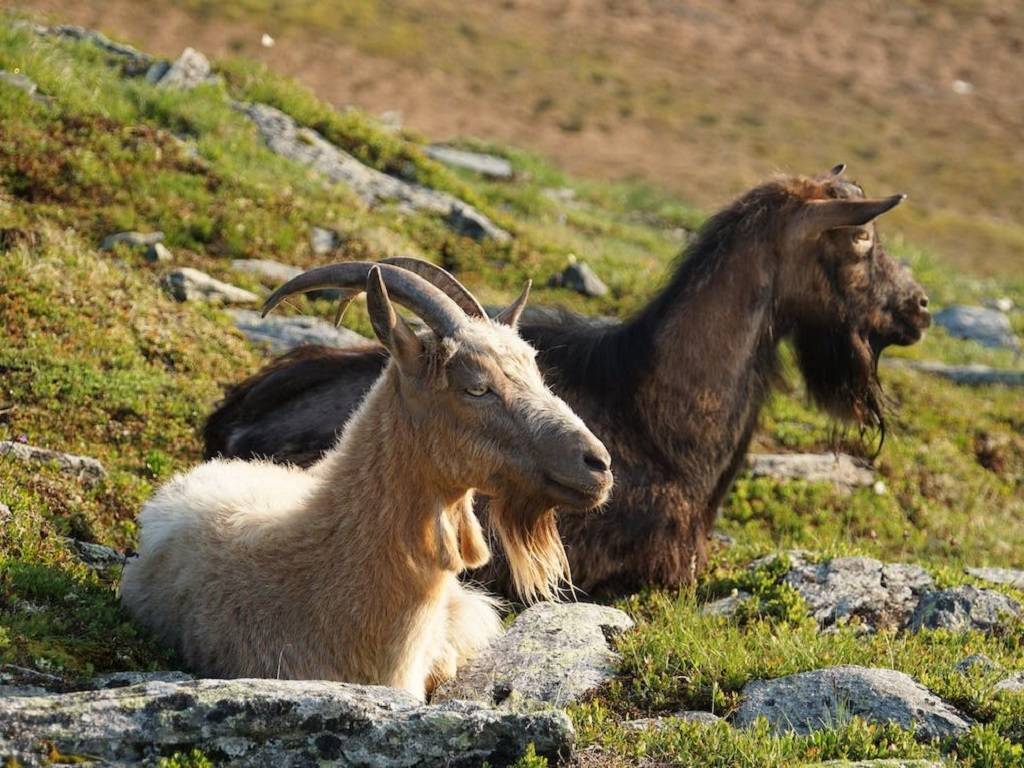
Located in the southern part of India, Karnataka is home to a diverse range of climates and landscapes, making it an ideal location for raising goats.
Goats are known for their hardiness and adaptability, which makes them well-suited for the varied conditions found in Karnataka. In addition to their ability to thrive in a range of environments, goats also have a number of other advantages as livestock. They are efficient converters of feed, meaning that they can produce more meat or milk per pound of feed than many other types of livestock. They are also less demanding in terms of housing and space, and they require less labor to raise than larger animals such as cattle.
In Karnataka, goats are commonly raised for their meat, milk, and skin. Goat meat, or mutton, is a popular and nutritious food in the region, and it is in high demand both domestically and internationally. Goat milk is also highly sought after, as it is known for its health benefits and is often used to make a variety of dairy products such as cheese and yogurt. The skin of goats is also used to make leather, which has a number of commercial and industrial applications.
One of the key challenges of goat farming in Karnataka is the availability of quality breeding stock. To ensure the success of their operations, goat farmers must have access to healthy, genetically superior animals. To meet this need, the government of Karnataka has established a number of breeding centres and goat farms that produce high-quality animals for sale to farmers.
In addition to providing breeding stock, the government also offers a range of support services to goat farmers in Karnataka. These include training programs on goat farming techniques, access to financing, and technical assistance. The government also provides support to farmers in the form of subsidies and other incentives, which can help to reduce the cost of raising goats and improve the profitability of the enterprise.
Overall, goat farming in Karnataka is a thriving and important industry. It provides a source of income and employment for thousands of people, and it plays a vital role in the state's economy. With support from the government and a focus on quality breeding, goat farming in Karnataka is well-positioned to continue to grow and thrive in the future.
How to begin Goat-Farming in Karnataka
Prior to beginning goat farming in Karnataka, an important consideration is housing for the goats.
Goat Shelter
One of the crucial components in the start of commercial goat farming is goat shelter. The goat's health is directly impacted by the house layout. It shouldn't be shut or only partially open. The home should have adequate cross-sectional ventilation. For the goats' health to be at its highest level, they must be clean, dry, and hygienic. Goats should have access to water outside the property. The shelter's width shouldn't exceed 20 feet, and its length should be as long as possible. Depending on the size of your property.
Goat Breed
The choice of goat breed is equally crucial. Choose a breed of goat that is ideal for Karnataka goat farming. After gaining some experience, you can switch to an expensive and exotic goat breed. You can even begin with the native goat breed of Karnataka.
Breeds of goat that are suited to the Karnataka environment
- Osmanabadi Goat
- BoerGoat
- Malabari Goat
- Sirohi Goat
- Sannen Goat Breed
- Kanni Adu
Goat Feed
A significant aspect of commercial goat husbandry is weight increase. The sort of feed you provide your goats will have a significant impact on their health and ability to acquire weight. For greater productivity in the stall-feeding goat farming technique, the goat feed should be green, dry, or concentrated. Goat feed is the sole source of income for goat farming; you cannot make a living off of it.
Goat Management and Care
Goat-like creatures prefer a dry environment and typically live there. Therefore, the farm environment should constantly be dry and hygienic for improved productivity or the health of the goats. Goat youngsters, pregnant goats, nonpregnant goats, castrated goats, and breeding bucks should all have their own cages.
Pregnant goats and farm breeders should receive an additional 100 g of concentrated feed. Plans for additional arrangements should be made for the winter and rainy days. For increased productivity, goats should be dewormed before or after the monsoon. On the farm, medicines, anti-inflammatories, and antibiotics should always be accessible.











